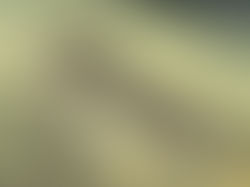바늘을 잘게 잘라 매일 마시는 녹즙에 넣어 봐.가늘고 뾰족한 바늘 조각은 내장을 휘돌아 다니면서 치명적인 상처들을 만들지.혈관을 따라 심장에 이르면 맥박을 잠재우며 죽음을 부르는데,아무런 외상도 없어. - 천운영의 소설 『바늘』 중
이미지는 보이는 자리에서 끝나지 않는다. 천운영의 『바늘』에 등장하는, 보이지 않는 파편이 몸 안을 돌며 조용히 작동하는 장면처럼, 잘게 쪼개진 시각의 단위들은 외상 없이 지각의 회로를 건드리고 맥락의 리듬을 교란한다. 흔적은 미미하지만, 감각의 중심엔 미세한 균열이 남는다.
어린 시절 간이 현미경에서 본 세계는 망점의 군집이었다. 이후 픽셀의 격자, 더 나아가 렌더링과 생성 모델의 수치가 장면을 대체했다. 단위는 점에서 사각형, 다시 계산된 데이터로 이동했고, 이미지는 실재를 보증하는 창이기보다 현실을 재작성하는 장치로 변했다. 세부는 점점 정교해졌지만, 진위를 가르는 경계는 오히려 흐려졌다.
《미도래》는 이러한 미시 단위들의 침투와 중첩을 다룬다. 점, 픽셀, 텍스처 데이터가 서로를 번역하며 떠다닐 때, 표면의 선명도는 유지되지만 인식의 초점은 안쪽에서 천천히 이동한다. 이 작업은 재현의 확신을 강화하기보다, 감각과 확신 사이의 어긋남을 드러내는 데 목적이 있다. 선명함이 아니라 읽힘의 문제—보이는 것과 믿어지는 것 사이의 미세한 간극을 추적한다.
여기서 이미지는 일종의 물성조절을 거친 시각적 식괴로 제시된다. 점도와 결을 조정해 섭취(보기)를 돕되, 의미의 농도는 관람자가 직접 가늠하도록 남겨 둔다. 익숙한 시각 문법이 미세하게 변조되는 그 지점에서, 이미지의 단위들은 표면을 지나 인식의 내부로 스며들고, 관람은 조용하지만 되돌릴 수 없는 변화를 예고한다.
Images do not end where they are seen. As in the scene from Cheon Un-yeong’s Needle, where invisible shards circulate inside the body and work in silence, finely divided units of vision touch the circuits of perception without leaving a visible wound, disrupting the rhythm of context. The trace is slight, yet a hairline crack remains at the center of sensation.
In childhood, a toy microscope revealed a world that was a swarm of halftone dots. Later came the grid of pixels, and then the numerics of rendering and generative models that could replace a scene altogether. The unit moved from dot to square, then to computed data; the image shifted from a window that guaranteed reality to an apparatus for rewriting it. Detail grew more exacting, but the boundary by which we tell the true from the false grew more diffuse.
Midore addresses the infiltration and superimposition of these micro-units. As dots, pixels, and texture data translate one another and drift, surface sharpness holds while the focus of perception slowly migrates inward. The aim is not to bolster representational certainty, but to expose the slippage between sensation and conviction—less a matter of sharpness than of legibility, the fine gap between what is seen and what is believed.
Here the image is presented as a texture-modified visual bolus. Viscosity and grain are tuned to aid ingestion (seeing), while the density of meaning is left for viewers to gauge. At the point where familiar visual grammar is subtly retuned, the image’s units pass across the surface and seep into the interior of cognition, and looking foretokens a quiet but irreversible change.



